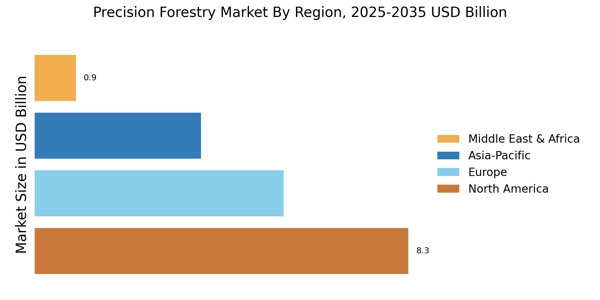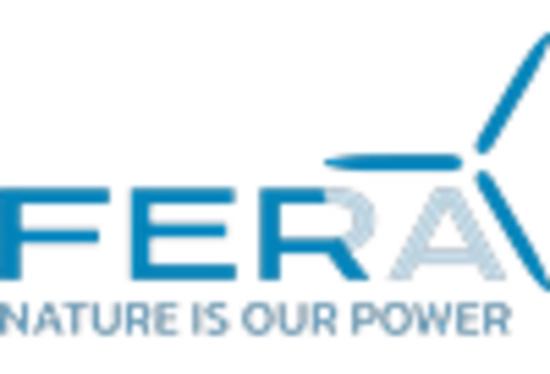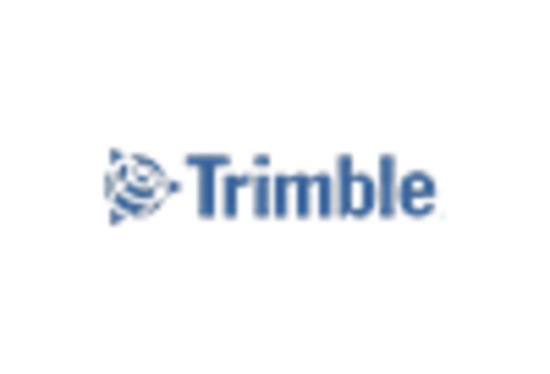Regulatory Support
Regulatory support plays a crucial role in shaping the Precision Forestry Market. Governments are increasingly recognizing the importance of sustainable forestry practices and are implementing policies that encourage the adoption of precision forestry technologies. Incentives such as tax breaks, grants, and subsidies for adopting advanced technologies are becoming more common. For instance, certain regions have introduced regulations that mandate the use of precision forestry methods to enhance forest management. This regulatory environment not only fosters innovation but also attracts investments into the Precision Forestry Market, as companies seek to comply with new standards while improving their operational efficiency.
Sustainability Initiatives
Sustainability initiatives are becoming a cornerstone of the Precision Forestry Market. With growing awareness of environmental issues, there is a heightened focus on sustainable forestry practices. This includes the implementation of precision forestry techniques that minimize waste and optimize resource use. For example, precision thinning and selective logging can enhance forest health while ensuring economic viability. Reports indicate that sustainable forestry practices can lead to a 20% increase in forest carbon stocks over time. Consequently, companies that prioritize sustainability are likely to gain a competitive edge in the Precision Forestry Market, appealing to environmentally conscious consumers and investors alike.
Technological Advancements
The Precision Forestry Market is experiencing a surge in technological advancements that enhance operational efficiency. Innovations such as drones, remote sensing, and IoT devices are being integrated into forestry practices. These technologies enable real-time data collection and analysis, which can lead to improved forest management strategies. For instance, the use of drones for aerial surveys can reduce the time and labor costs associated with traditional methods. According to recent estimates, the adoption of these technologies could increase productivity in the forestry sector by up to 30%. As a result, stakeholders are increasingly investing in these technologies, driving growth in the Precision Forestry Market.
Data Analytics and Management
Data analytics and management are transforming the Precision Forestry Market by enabling more informed decision-making. The integration of big data and analytics tools allows forestry managers to analyze vast amounts of information regarding forest health, growth rates, and environmental conditions. This data-driven approach facilitates proactive management strategies that can lead to improved outcomes. For instance, predictive analytics can help in forecasting timber yields and optimizing harvest schedules. As the industry increasingly relies on data, the demand for advanced analytics solutions is expected to rise, further driving innovation and growth in the Precision Forestry Market.
Rising Demand for Wood Products
The rising demand for wood products is a significant driver of the Precision Forestry Market. As populations grow and urbanization increases, the need for sustainable wood sources becomes more pressing. Precision forestry techniques allow for more efficient harvesting and management of forest resources, ensuring that supply can meet the increasing demand. Market analyses suggest that the demand for wood products could grow by 15% over the next decade. This trend compels forestry companies to adopt precision methods to enhance yield and sustainability, thereby propelling growth in the Precision Forestry Market.


















Leave a Comment